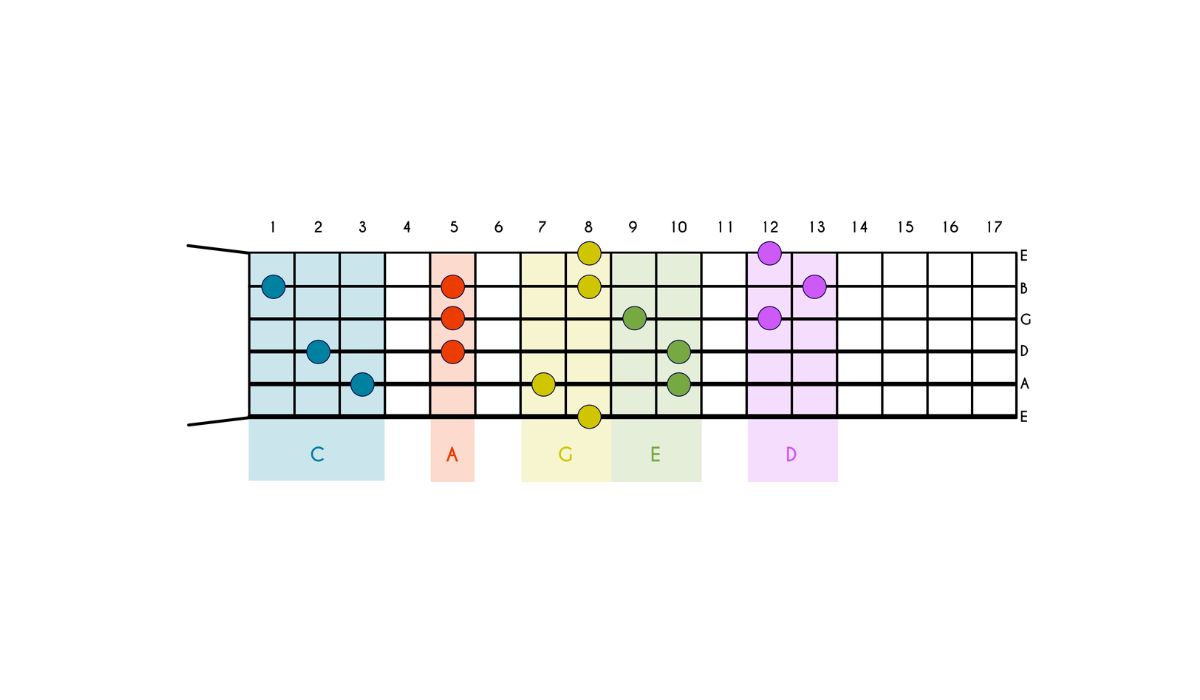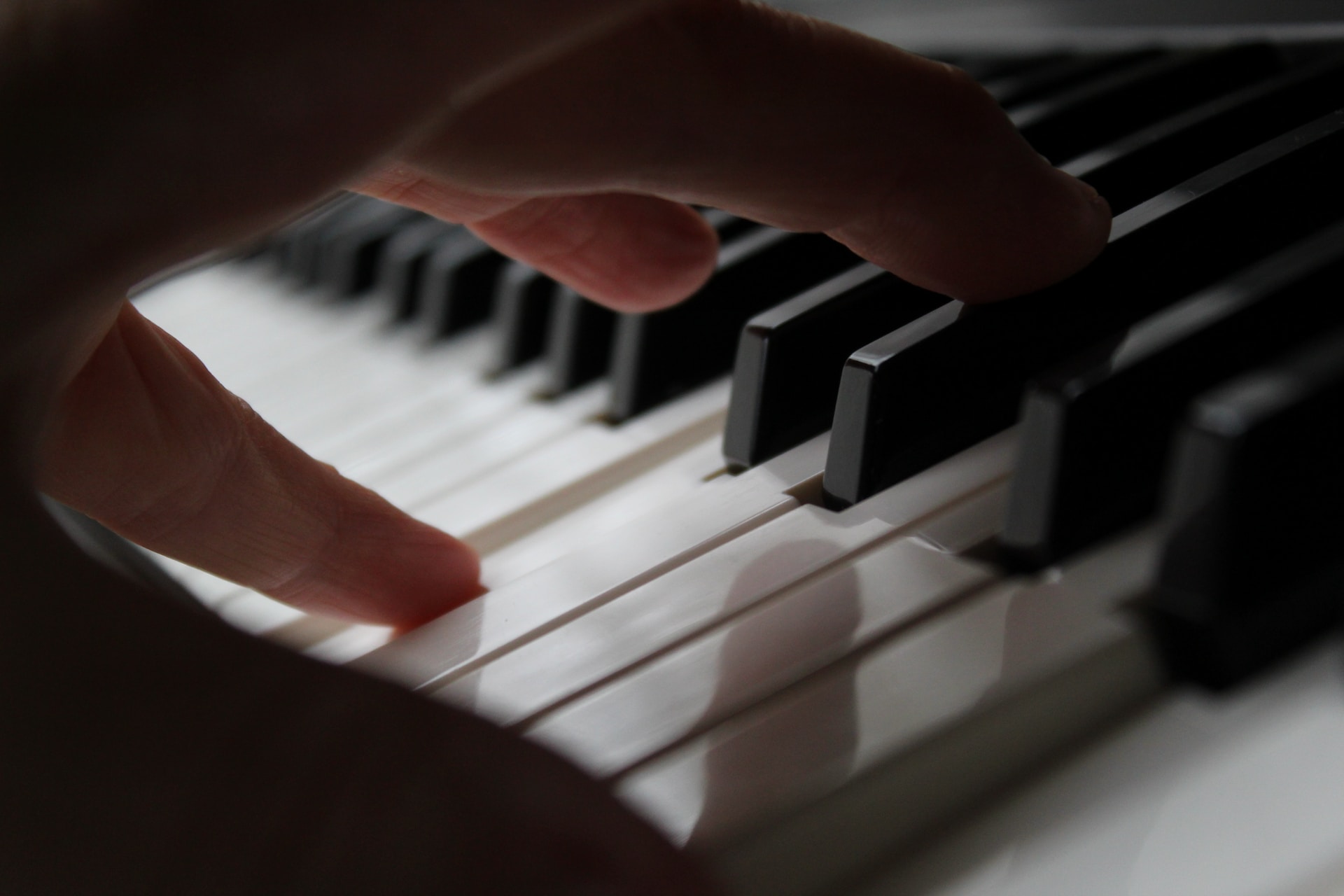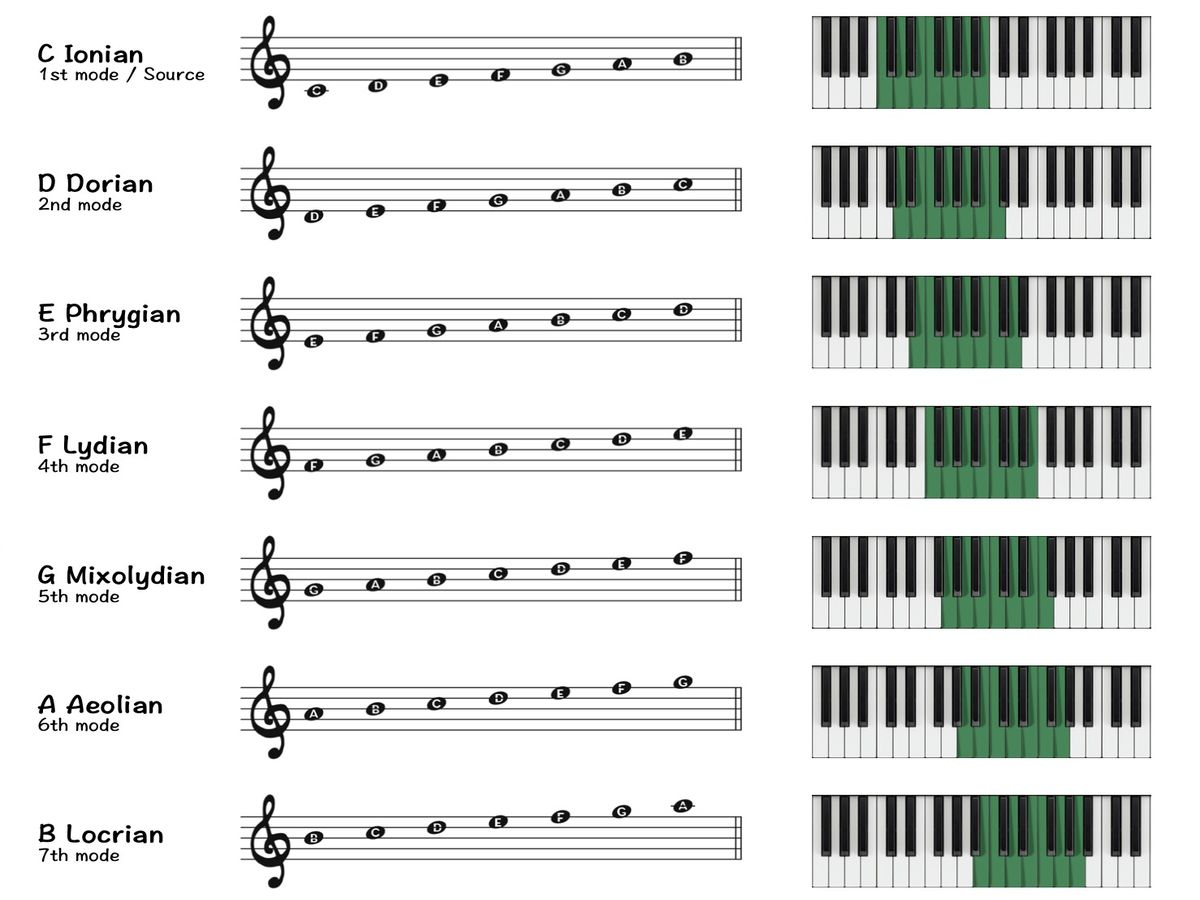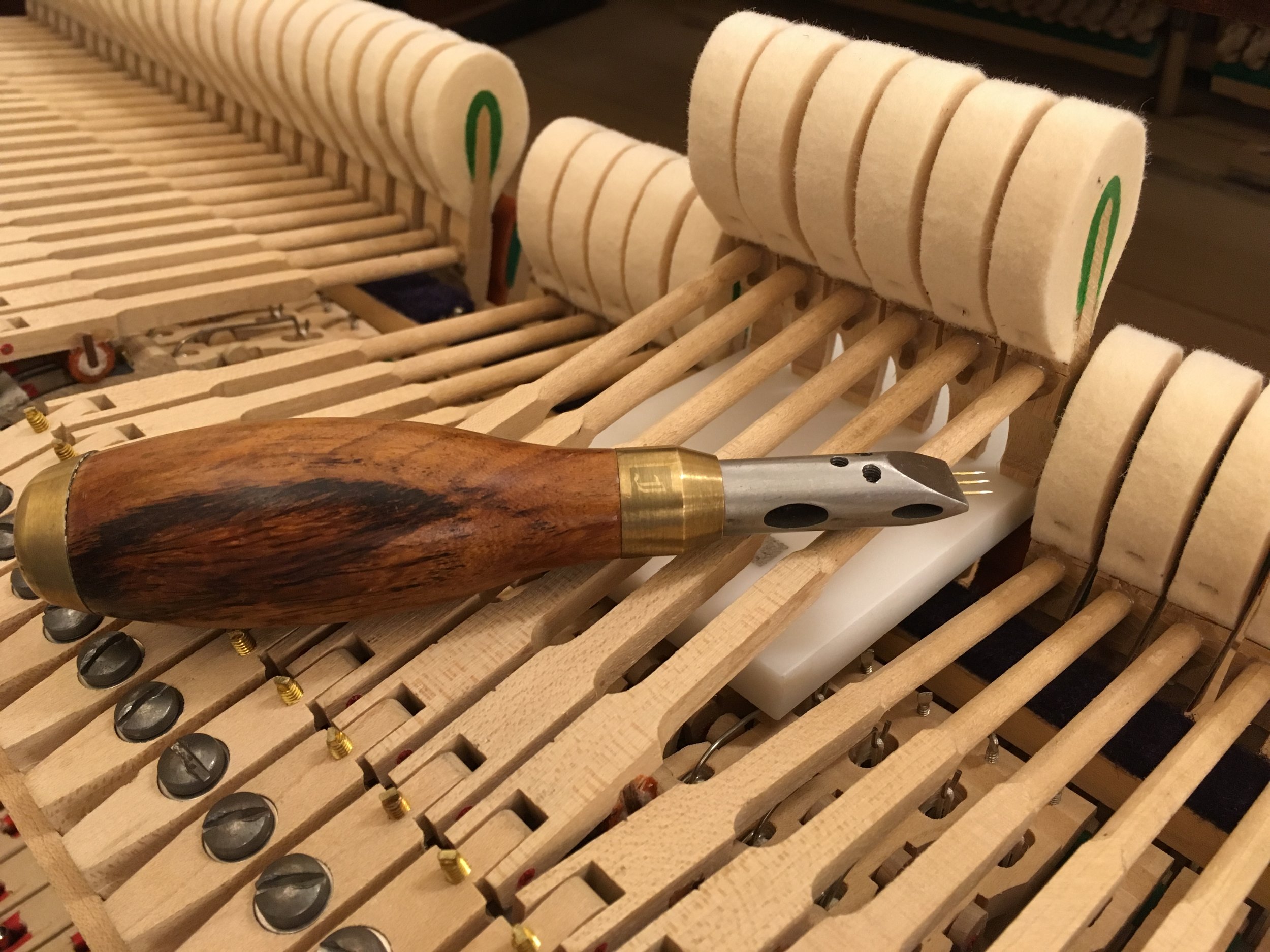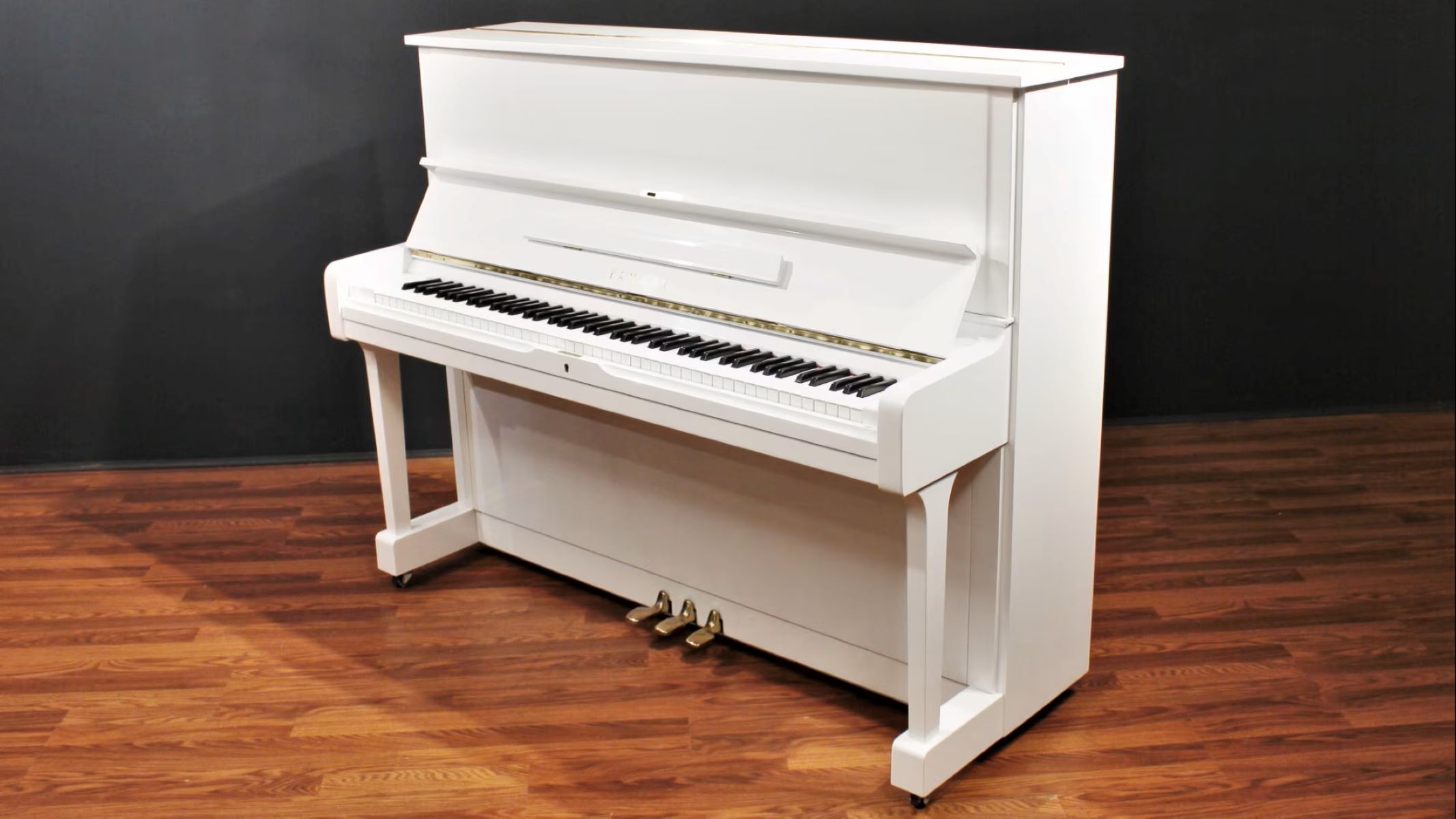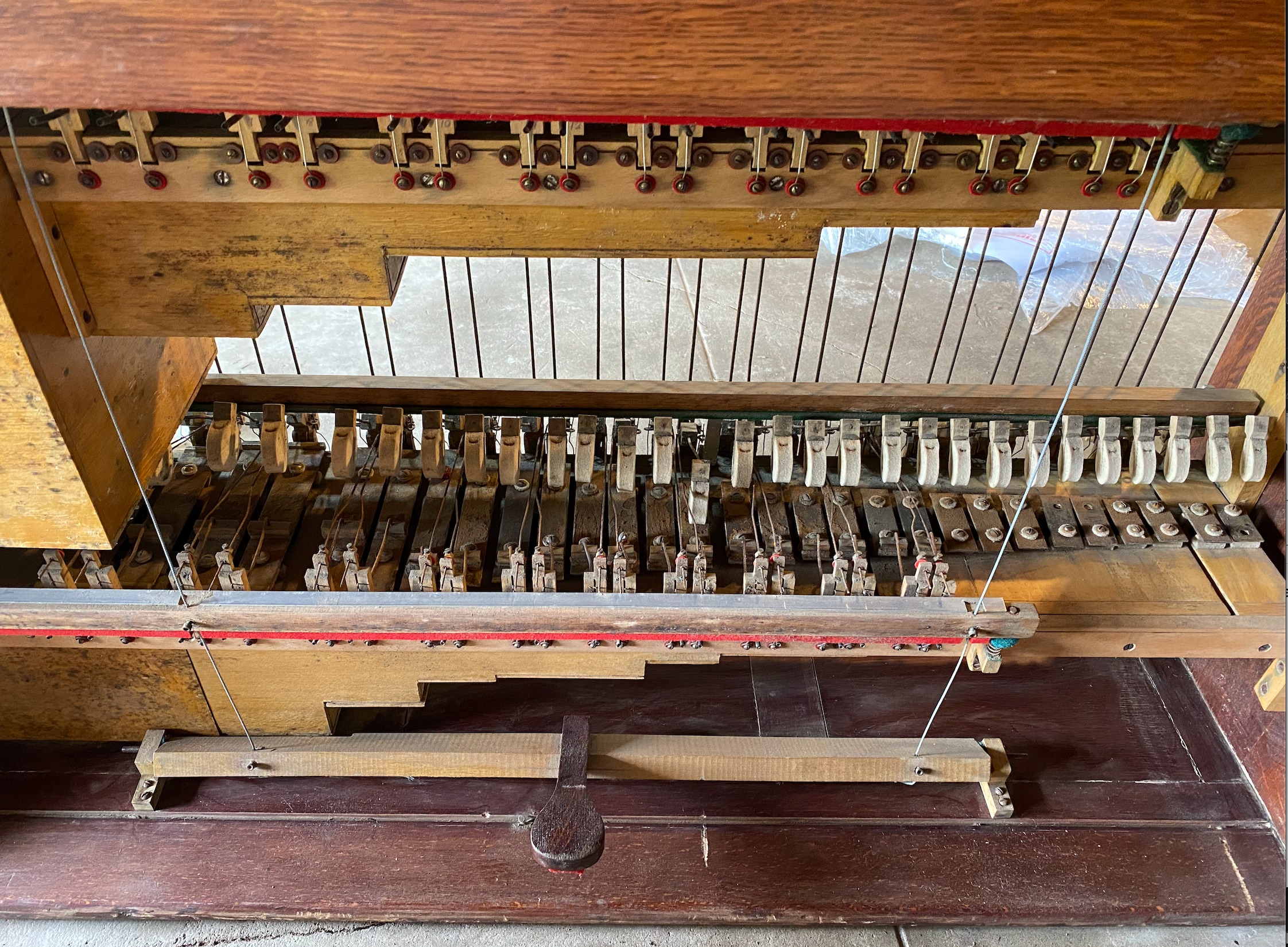Home>Instruments>Piano>What Is A Piano Scale


Piano
What Is A Piano Scale
Published: February 11, 2024
Learn all about piano scales, including major and minor scales, and how they are essential for mastering the piano. Discover the importance of scales in piano playing and how to practice them effectively. Improve your piano skills with comprehensive scale knowledge.
(Many of the links in this article redirect to a specific reviewed product. Your purchase of these products through affiliate links helps to generate commission for AudioLover.com, at no extra cost. Learn more)
Table of Contents
Introduction
Welcome to the enchanting world of piano music! As you embark on your musical journey, you'll encounter various fundamental elements that form the backbone of piano playing. One such crucial element is the piano scale. Whether you're a novice eager to explore the piano's potential or a seasoned pianist seeking to refine your skills, understanding piano scales is essential for your musical development.
The concept of piano scales might initially seem daunting, but fear not! In this comprehensive guide, we will demystify the intricacies of piano scales, unraveling their significance, types, and practice techniques. By the end of this exploration, you'll have a newfound appreciation for the role of scales in piano playing and be equipped with practical insights to elevate your musical prowess.
So, let's embark on this melodic odyssey and delve into the captivating realm of piano scales. Whether you're drawn to the resonant harmony of classical compositions or the rhythmic allure of contemporary melodies, mastering piano scales will undoubtedly enrich your musical experience and empower you to express yourself fluently through the enchanting language of music.
Definition of a Piano Scale
At its core, a piano scale is a sequence of musical notes arranged in ascending or descending order, typically spanning one octave. These notes follow a specific pattern of intervals, which are the spaces between the pitches. The fundamental purpose of a scale is to establish a tonal framework within which melodies, harmonies, and chords can be constructed.
Each scale is characterized by its unique combination of whole steps and half steps, forming a distinct sonic palette that evokes varied emotions and moods. The most common and familiar scale is the major scale, renowned for its uplifting and triumphant sound. In contrast, the minor scale exudes a more melancholic and introspective aura, captivating listeners with its emotive resonance.
As a pianist, comprehending scales is akin to mastering the foundational grammar of music. It provides the essential vocabulary and syntax that underpin melodic expression and harmonic cohesion. By internalizing the structure and essence of scales, pianists can navigate the keyboard with confidence, unlocking a rich tapestry of musical possibilities.
Moreover, scales serve as the building blocks for improvisation, composition, and technical dexterity. They cultivate a pianist’s agility, fostering fluency and precision in playing intricate passages and embellishments. Furthermore, scales facilitate a deeper understanding of key signatures and chord progressions, enabling musicians to interpret and perform diverse musical compositions with finesse.
In essence, a piano scale encapsulates the essence of musical tonality, offering a roadmap for melodic exploration and harmonic resonance. It is a foundational pillar of musical proficiency, empowering pianists to communicate and evoke profound emotions through the language of music.
Types of Piano Scales
Piano scales encompass a diverse array of tonal palettes, each imbued with its unique character and emotive resonance. Understanding the various types of piano scales is pivotal for expanding your musical repertoire and honing your expressive capabilities. Let’s explore some of the prominent piano scales that enrich the sonic tapestry of piano music:
- Major Scale: The quintessential embodiment of joyous exuberance, the major scale is revered for its uplifting and triumphant sound. Comprising a sequence of whole and half steps, this scale forms the melodic foundation for countless classical and contemporary compositions, infusing them with a sense of optimism and vitality.
- Minor Scale: In stark contrast to the major scale’s jubilant aura, the minor scale exudes a poignant and introspective quality, evoking emotions of longing, melancholy, and introspection. Its evocative allure lends itself to a myriad of musical genres, from soul-stirring classical sonatas to soulful jazz ballads.
- Harmonic Minor Scale: Distinguished by its unique augmented second interval, the harmonic minor scale possesses a captivating blend of mystique and drama. Its distinct tonal flavor enriches compositions with a touch of exotic allure, making it a compelling choice for evoking emotive depth and intrigue.
- Melodic Minor Scale: Renowned for its nuanced and expressive nature, the melodic minor scale undergoes subtle alterations in its ascending and descending forms, resulting in a captivating duality of tonal hues. This scale is a cherished tool for infusing compositions with emotive subtlety and melodic sophistication.
- Blues Scale: Embodied by its soulful and expressive essence, the blues scale is a cornerstone of blues and jazz music, renowned for its raw emotional potency and improvisational versatility. Its distinctive blend of flatted and natural notes epitomizes the emotive fervor and improvisational spirit of blues music.
These are just a few examples of the myriad piano scales that enrich the musical landscape, each offering a unique palette of tonal hues and emotive resonances. By acquainting yourself with these diverse scales, you’ll expand your expressive repertoire and imbue your musical interpretations with a kaleidoscope of emotive depth and sonic richness.
Importance of Piano Scales
The significance of piano scales transcends mere technical exercises; it permeates every facet of a pianist’s musical journey, wielding profound influence on artistic expression, technical proficiency, and a comprehensive understanding of music theory. Let’s delve into the multifaceted importance of piano scales:
Foundational Technique: Mastery of piano scales cultivates essential technical skills, fostering dexterity, finger strength, and coordination. As pianists navigate the intricate patterns of scales, they refine their hand posture and articulation, laying a robust technical groundwork for tackling complex musical compositions with fluency and precision.
Ear Training and Intonation: Engaging with scales nurtures a pianist’s ear for pitch, intonation, and tonal relationships. By internalizing the distinct intervals and sonic characteristics of various scales, musicians develop a heightened sensitivity to tonal nuances, enriching their ability to interpret and express musical phrases with exquisite intonation and emotive resonance.
Understanding Music Theory: Piano scales serve as a gateway to comprehending fundamental principles of music theory, including key signatures, chord structures, and harmonic progressions. Through the study of scales, pianists gain insight into the intricate tapestry of tonal relationships, empowering them to decipher and interpret musical compositions with astute theoretical acumen.
Expressive Vocabulary: Each piano scale embodies a distinct emotional aura, from the jubilant exuberance of the major scale to the poignant introspection of the minor scale. By internalizing these tonal palettes, pianists expand their expressive vocabulary, infusing their performances with a kaleidoscope of emotive depth and sonic richness.
Enhanced Improvisational Skills: Proficiency in scales fosters improvisational fluency and creativity, enabling pianists to navigate spontaneous musical expressions with confidence and flair. The inherent structure and tonal characteristics of scales provide a fertile ground for improvisation, emboldening musicians to embark on captivating melodic journeys and spontaneous musical dialogues.
Ultimately, piano scales serve as a cornerstone of musical proficiency, enriching a pianist’s artistic repertoire, technical prowess, and theoretical acumen. Embracing the importance of scales empowers musicians to communicate and evoke profound emotions through the universal language of music, transcending technical exercises to embody a profound artistic and expressive journey.
How to Practice Piano Scales
Effective practice techniques are pivotal for mastering piano scales and integrating them seamlessly into your musical repertoire. Here are practical strategies to elevate your scale practice sessions and imbue your playing with fluency, precision, and expressive depth:
- Consistent Routine: Establish a regular practice routine dedicated to scales, allocating focused time slots within your practice sessions. Consistency is key to reinforcing muscle memory and technical proficiency.
- Variety in Fingerings: Experiment with different fingerings for scales, exploring various hand positions and finger patterns to enhance agility and adaptability across the keyboard.
- Metronome Utilization: Integrate a metronome into your practice regimen to cultivate rhythmic precision and evenness in scale execution. Gradually increase the tempo as your proficiency improves.
- Articulation and Dynamics: Pay attention to articulation and dynamics while practicing scales, varying the touch and intensity of your keystrokes to imbue the scales with expressive nuances.
- Contrapuntal Scales: Explore contrapuntal scales, such as contrary motion and parallel motion scales, to enhance coordination between the hands and deepen your understanding of scale structures.
- Exploration of Modes: Venture beyond the traditional major and minor scales to explore modes such as Dorian, Mixolydian, and Lydian, broadening your harmonic and melodic palette.
- Integration into Repertoire: Seamlessly integrate scales into your practice of musical pieces, identifying scale passages within compositions and approaching them with technical finesse and musical sensitivity.
- Reflective Practice: Engage in reflective practice, recording your scale sessions to assess areas for improvement and track your progress over time.
- Interpretive Experimentation: Embrace interpretive experimentation with scales, infusing them with varying tonal colors, articulations, and expressive phrasing to cultivate a nuanced and emotive approach.
By incorporating these strategies into your scale practice routine, you’ll elevate your technical proficiency, deepen your musical understanding, and infuse your playing with a captivating blend of precision and expressive depth. Embrace each scale practice session as an opportunity for artistic exploration and technical refinement, nurturing a holistic and immersive approach to mastering the enchanting language of piano music.
Conclusion
Embarking on a journey through the realm of piano scales unveils a profound tapestry of musical intricacies, technical refinement, and expressive depth. As you immerse yourself in the melodic odyssey of scales, you transcend the realm of technical exercises, embracing a transformative and multifaceted exploration of musical artistry.
From the jubilant resonance of major scales to the introspective allure of minor scales, each tonal palette embodies a kaleidoscope of emotions and moods, enriching your musical interpretations with a captivating array of expressive hues. The importance of scales extends beyond technical proficiency, permeating every facet of your musical journey, from ear training and theoretical acumen to improvisational fluency and interpretive depth.
As you cultivate a disciplined and immersive approach to scale practice, integrating varied fingerings, rhythmic precision, and expressive nuances, you embark on a holistic journey of artistic refinement and technical mastery. Each scale becomes a canvas for interpretive experimentation, reflective refinement, and artistic expression, empowering you to communicate profound emotions and narratives through the universal language of music.
Ultimately, the mastery of piano scales transcends the confines of technical exercises, evolving into an immersive and transformative odyssey of artistic exploration. Embrace the enchanting language of scales as a gateway to melodic expression, harmonic resonance, and technical finesse, and revel in the boundless possibilities they bestow upon your musical journey.
So, as you embark on this melodic odyssey and delve into the captivating realm of piano scales, may each scale resonate with emotive depth and technical finesse, enriching your musical tapestry with a symphony of expressive hues and melodic resonance.

